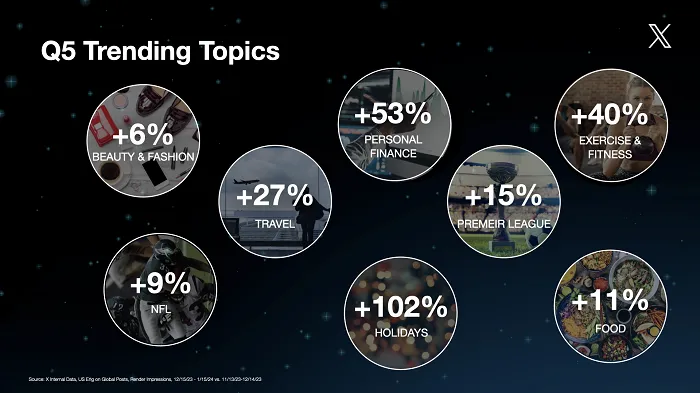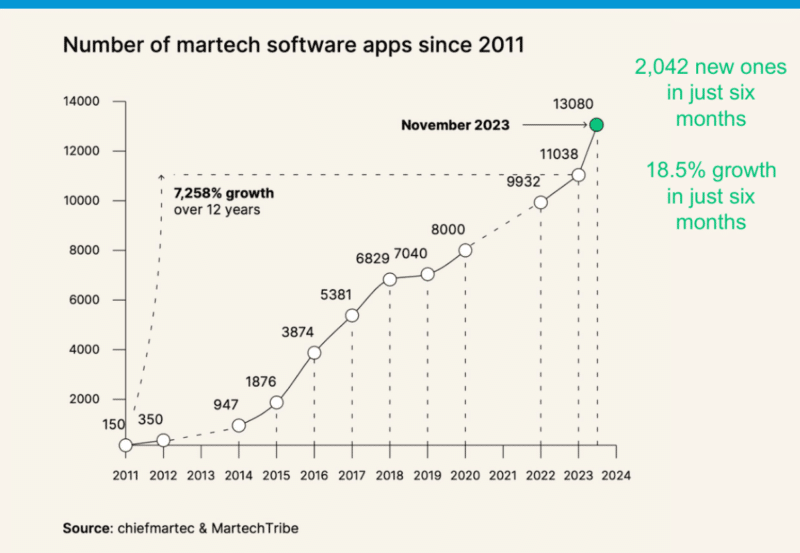
Modern businesses face numerous challenges in tailoring marketing efforts and increasing customer engagement, so customer segmentation is a valuable strategy for tailoring marketing efforts and improving engagement.
However, traditional methods of segmentation present difficulties such as manual data analysis, limitations in basic data sources, difficulties accessing real-time customer data streams, and large datasets becoming more complex over time. Nevertheless, Artificial Intelligence and Machine Learning offer game-changing transformations of customer segmentation processes.
Customer Segmentation Fundamentals
Customer segmentation refers to categorizing customers into smaller manageable groups based on various characteristics. Businesses traditionally used psychographics, demographics, and behavioral data when conducting customer segmentation – using age, gender, or occupational characteristics that influence lifestyle preferences within their customer base as segmentation criteria and behavioral data that captures how customers interact with services or products offered.
Technology advances have allowed greater insight into customer motivations by tracking their purchasing journey. Sentiment analysis can uncover customer opinions regarding products or services, while customer lifetime value assessment helps identify and categorize the most valuable customers.
Customer segmentation seeks to provide more tailored experiences and marketing messages, increasing conversion rates and sales.
Challenges in Traditional Customer Segmentation
Traditional customer segmentation comes with its own set of challenges:

1. Manual Data Analysis: Traditional segmentation requires manually collecting information from various sources, which is time and labor-intensive.
2. Basic Data Source Limitations: Relying solely on basic data sources like demographics can only provide an incomplete picture of customers, with inaccuracies in survey responses and irrelevant attributes potentially hindering effective segmentation strategies.
3. Problems With Real-time Data: For effective segmentation, real-time information must be available quickly to respond rapidly to changing customer needs. Unfortunately, traditional sources do not provide this service, so missed opportunities are lost.
4. Growing Data Sets: As customer data expands, traditional storage solutions may find accommodating growing datasets challenging to extract useful insights.
AI Transforms Segmentation Process
Artificial Intelligence offers solutions for the challenges associated with traditional customer segmentation. Utilizing AI-powered tools makes the segmentation process more effective and informed. Here are a few essential AI technologies driving customer segmentation:
1. Machine Learning Algorithms: At the core of artificial intelligence applications, machine learning algorithms analyze large datasets precisely, uncovering patterns, relationships, and trends with pinpoint accuracy.
2. Deep Learning: Deep learning algorithms use neural networks to detect complex relationships within data.
3. Natural Language Processing (NLP): NLP allows sentiment analysis to understand customer emotions regarding products or services, language translation, speech recognition, text classification, and text summarization – among many other functions.
4. Chatbots and Virtual Assistants: Conversational AI tools offer customers solutions to customer inquiries, gather valuable customer preferences and behavior data, and improve overall satisfaction.
AI is revolutionizing customer segmentation across various marketing areas:
- Predictive Analytics: Artificial Intelligence tools use data mining algorithms to predict customer behaviors and interests, enabling segmentation based on current and potential market conditions.
- Customer Profiling: AI autonomously collects information from various sources for segmentation.
- Personalization: AI creates marketing content and campaigns tailored to specific customer segments.
- Cross-channel Integration: AI aggregates customer data from various touch points into an in-depth customer profile.
Benefits of AI in Customer Segmentation
AI integration in the customer segmentation process brings many benefits, such as:
1. Real-Time Data Analysis:
AI customer segmentation offers several advantages over traditional methods, particularly real-time data analysis. While traditional segmentation techniques often rely on historical information for analysis, traditional approaches must allow businesses to adjust to rapidly shifting market conditions quickly enough. With their powerful algorithms, AI tools provide real-time insight into customer behavior, preferences, and market trends in an instantaneous fashion so businesses can make timely decisions, adapt strategies swiftly, and take advantage of emerging opportunities quickly.
2. Analyzing Large Data Sets:
Businesses navigating the big data age need the ability to handle large and complex datasets efficiently. AI-powered segmentation tools utilize machine learning algorithms to analyze vast amounts of structured or unstructured information efficiently. Businesses can extract meaningful insights from growing datasets more quickly than ever by automating segmentation processes with these AI-powered segmentation tools.
3. Enhance customer experience:
AI can play an essential role in elevating customer experiences by giving businesses a better understanding of their customers. Through tracking habits, behaviors, interests, and preferences of their target customer base, AI enables businesses to craft tailored marketing campaigns that resonate with individual customers on an individual basis for increased satisfaction, loyalty, and connection with a brand – ultimately leading to improved brand perception and increased retention rates.
4. Artificial Intelligence Tools Can Increase Conversion Rates:
Artificial Intelligence can customize product offerings according to different customer segments’ unique needs and preferences. By leveraging AI insights, businesses can tailor products or services seamlessly with expectations from each segment; this approach increases relevance and conversion. AI tools with sophisticated algorithms can predict customer behavior and preferences so they can present compelling offers at the right time to increase conversions.
5. Marketing Efficiency:
AI-powered segmentation tools bring unprecedented efficiency to marketing efforts. By automating customer data analysis, these tools create detailed customer profiles that enable businesses to craft highly targeted strategies. Efficiency gains are especially evident in their ability to identify high-value customer segments and allocate marketing resources efficiently. Furthermore, AI helps organizations understand customer journeys more closely to optimize campaigns for maximum impact and ROI.
Implementing AI in Customer Segmentation
Implementing AI into customer segmentation takes several carefully considered steps:
- Determine Business Needs: Identify challenges related to customer behavior, experience, and marketing initiatives to determine where AI would most provide value for business needs.
- Collect Relevant Data: Gather quality information from different sources, such as CRM systems, databases, and digital touchpoints.
- Choose the Appropriate Machine Learning Models: For customer segmentation purposes, carefully consider which machine learning models best address linear regression, classification, clustering, and dimensionality reduction needs.
- Build and Test an AI Model: Train AI models on high-quality data while continuously refining them based on testing outcomes to enhance performance.
- Integrate Existing Systems: For improved real-time insights and decision-making, ensure seamless integration with existing CRM or marketing platforms.
- Monitor and Optimize: Be sure to constantly evaluate AI performance, update models as customer behaviors change, or market trends shift, and optimize for continuous improvement.
AI Tools for Customer Segmentation
1. OTRACKER:
In the dynamic customer engagement landscape, OTRACKER is a powerful AI tool designed for precise Customer Segmentation. Leveraging advanced features, OTRACKER offers insights into user behavior, facilitating strategic business decision-making.

Key Features:
A/B Testing:
- Conduct effective marketing campaigns with A/B testing functionality.
- Optimize strategies based on real-time performance data.
Heatmap:
- Visualize user interactions with scroll maps and click maps.
- Identify hotspots and areas of interest on your website or application.
IP Blocking:
- Enhance security and control by blocking single or bulk IPs based on location.
- Safeguard your platform from unwanted access and potential threats.
Real-time Analytics:
- Stay ahead with up-to-the-minute analytics for informed decision-making.
- Monitor user activities and campaign performance in real-time.
Notifications:
- Receive instant notifications for events and user interactions.
- Stay informed about campaign milestones and user engagement.
User Path:
- Trace the user journey through your platform.
- Gain insights into the sequential interactions, aiding in user experience optimization.
User Profiling:
- Develop detailed user profiles for personalized targeting.
- Understand user preferences and behaviors for tailored marketing strategies.
2. Peak:
Peak is a powerful AI-driven tool designed to streamline customer segmentation by providing innovative features like segment maps and smart segments. These functionalities categorize customers based on shared attributes, offering businesses a comprehensive view of their diverse customer landscape.
Key Features:
- Segment Maps: Visualizes customer groups based on attributes such as geographic location, age, gender, and interests.
- Smart Segments: Utilizes AI to identify changing customer needs, providing real-time insights for dynamic segmentation.
3. Klynk:
Klynk stands out as an AI tool that focuses on crafting personalized marketing campaigns and automating marketing processes. Its copilot bot aids in automatic content generation, making it a valuable asset for businesses seeking to enhance their marketing efficiency.
Key Features:
- Automated Marketing Campaigns: Provides users with the ability to build custom and automated marketing campaigns.
- Copilot Bot: It aids them in crafting emails with the correct tones and subject headlines.
4. Heap:
Heap focuses on analyzing digital touchpoints to unveil user behaviors, providing businesses with valuable insights into customer interactions. Through features like heat maps and charts, Heap aids in visualizing and understanding the intricacies of customer behavior.
Key Features:
- Digital Touchpoint Analysis: Examines user behavior across various digital platforms, including social media and websites.
- Visualization Tools: Provides heat maps and charts for a visual representation of user behavior.
5. Optimove:
Optimove is a comprehensive AI tool with a primary focus on enhancing brand loyalty and driving revenue opportunities. Through multichannel communication support and a dedicated bot, Optimove aims to create lasting customer relationships and identify avenues for revenue growth.
Key Features:
- Brand Loyalty Enhancement: Focuses on strategies to improve brand loyalty through targeted campaigns.
- Multichannel Communication: Supports communication across various channels to reach diverse audiences.
- Revenue Bot: Analyzes customer data to identify revenue-generating opportunities.
Conclusion
Artificial Intelligence has emerged as a game-changer in customer segmentation and offers efficiency, enhanced personalization, and real-time insights. As AI continues its exponential development path, adopting it into customer segmentation processes becomes not just a strategic option but an imperative for success in today’s data-driven future of business. Embark on AI power with open arms to transform customer engagement and drive new possibilities in customer engagement and business growth!
Visit www.onpassive.com for more tech-related updates.







































































